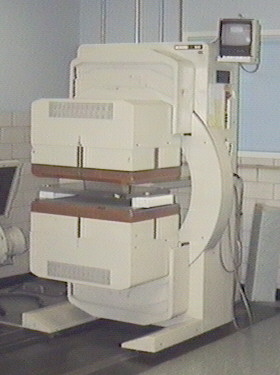By the 1980's computers were widely utilised in the nuclear medicine community.
Analogue to digital converters allowed acquired data to be stored within the
computer, mathematically manipulated with the aid of a monitor, and then imaged
onto film. Curve generation and regions of interest were appreciated as valuable
tools for diagnostic medicine. For SPECT, much progress had been made to overcome
attenuation problems using iterative and analytical approaches. Highly efficient
systems incorporated both multiple detector-heads and large fields-of-view.
The loss of image data resolution when networking was successfully overcome at the University
of Kansas, with the development of the Ethernet, in 1981.18
This brought us one step closer to 'telemedicine'.
The network connections between army bases, universities, and science centres
grew, creating an ever-expanding web of computers. In 1985, the National Science
Foundation (NSF) improved the system by funding the NSFNET. Five supercomputer
centres within US Universities formed this first Internet system which could send data at 56
kilobits per second - which is slower than some of today's modems.25
At present 128 kbps modems are being manufactured. There are many contributing factors to increasing data transfer speed, including cable type and server capabilities, which can put rates up to 840Mbps.

|

Figure 17: The Trionix Biad camera, in 1989.31
|
|
